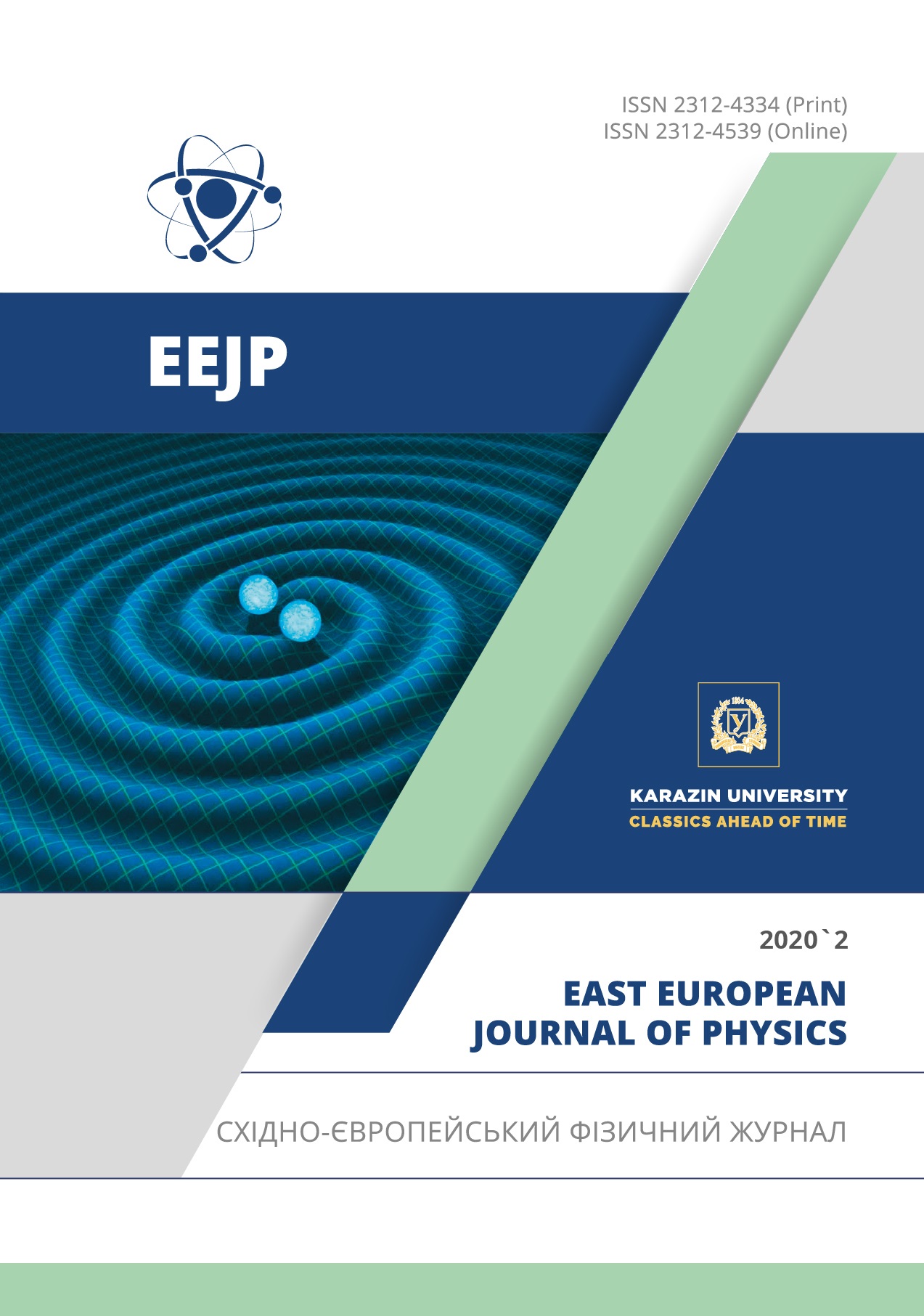Determination of 234U/238U, 235U/238U, 236U/238U Isotope Ratios in Uranium Oxide by Sector-Field ICP-MS
Abstract
Influence of mass bias effect, isobaric and polyatomic interferences on the results of 234U/238U, 235U/238U, 236U/238U isotope ratio determination in uranium oxide by sector-field ICP-MS was studied. Uranium isotopic standards CRM U100, CRM U200 based on triuranium octoxide (U3O8) and single-collector mass spectrometer ICP-SFMS ELEMENT 2 were used for research. It has been demonstrated that the mass bias effect has most influence on the results of uranium isotope ratios determination. To investigate the influence of the mass bias effect on the determinations of uranium isotope ratios, the external standardization calibration was used with three models (linear, power, exponential) describing the behavior of the specific discrimination coefficient β versus the mass of measured isotopes. The mass discrimination factor has been found to vary from 6.00 ´ 10-3 to 1.20 ´ 10-2. The advantage for using the (power/exponential)-law models of the β=F(Δm) relationship for correcting measured isotope ratios was justified. In case of polyatomic interferences, the efficiency of uranium hydride ion (235U1H+) formation is 3.54 ´ 10-5, while the impact of isobaric overlapping due to the contribution of scattered 238U ions to the intensities of less abundant 236U and 235U ions reaches 8.17 ´ 10-6. The relative measurement error for the 234U/238U, 236U/238U , ratios was found to be < 0.5 %, and for the 235U/238U, ratio less than 0.1 %. The calculated standard uncertainty u of the 234U/238U, 235U/238U, 236U/238U isotope ratio measurements in the CRM U100 was 0.563, 0.322 and 0.856 %, respectively. These are reasonable estimates in comparison with the uncertainties of certified values of 0.296, 0.097 and 0.265 %.
Downloads
References
V.A. Kalashnikov, Synopsis of Ph.D. dissertation, Federal State Unitary Enterprise Ural Electromechanical Plant, 2006. (in Russian)
G.V. Shishalova, M.A. Kulakova, and E.E. Varlashova, Analytics and Control. 7(2), 186-189 (2003) (in Russian)
A.V. Saprygin, V.M. Golik, А.А. Makarov, B.G. Dzhavayev, and V.N. Kudryavtsev, Standard Samples. 2, 39-48 (2007). (in Russian)
I.T. Platzner, Modern isotope ratio mass-spectrometry. (Chichester, Wiley, 1997), pp. 83-108.
A.V. Saprygin, B.G. Dzhavayev, and А.А. Makarov, Analytics and Control. 7(1), 68-73 (2003). (in Russian)
A.V. Saprygin, B.G. Dzhavayev, and А.А. Makarov, Analytics and Control. 7(1), 64-67 (2003). (in Russian)
S. Lapshin, O. Proshenkina, Equipment and materials. 3, 28-36 (2012). (in Russian)
A.V. Khoroshilov, E.L. Silakova, and P.I. Ivanov, Advances in Chemistry and Chemical Technology, 29(6), 56-58 (2015). (in Russian)
A.N. Baranova, in: Материалы Конференции «Современные Проблемы Геохимии» [Materials of the Conference “Contemporary Issues of Geochemistry”] (Irkutsk, Russia, 2011), pp. 84-86. (in Russian)
M. Zoriy, L. Halicz, M. Ketterer, C. Pickhardt, P. Ostapczuk, and J. Becker, J. Anal. At. Spectrom. 19, 362-367 (2004).
A.Yu. Leikin, and P.V. Yakimovich, Journal of Analytical Chemistry, 67(8), 752-762 (2012). (in Russian)
А.А. Pupyshev, and B.A. Sermyagin, Дискриминация ионов по массе при изотопном анализе методом масс-спектрометрии с индуктивно-связанной плазмой [Ion mass discrimination in the isotope analysis by the method of inductively coupled plasma mass spectrometry] (Ural State Technical University, Yekaterinburg, Russia, 2006), pp. 16-68. (in Russian)
V.A. Stebel’kov, O.V. Erokhin, N.R. Stankov, and A.I. Yermakov, Mass-Spectrometry. 1(3), 221-230 (2004). (in Russian)
Copyright (c) 2020 Dmytro V. Kutnii, Dmytro D. Burdeynyi, Stanislav A. Vanzha, Natalia V. Rud

This work is licensed under a Creative Commons Attribution 4.0 International License.
Authors who publish with this journal agree to the following terms:
- Authors retain copyright and grant the journal right of first publication with the work simultaneously licensed under a Creative Commons Attribution License that allows others to share the work with an acknowledgment of the work's authorship and initial publication in this journal.
- Authors are able to enter into separate, additional contractual arrangements for the non-exclusive distribution of the journal's published version of the work (e.g., post it to an institutional repository or publish it in a book), with an acknowledgment of its initial publication in this journal.
- Authors are permitted and encouraged to post their work online (e.g., in institutional repositories or on their website) prior to and during the submission process, as it can lead to productive exchanges, as well as earlier and greater citation of published work (See The Effect of Open Access).








